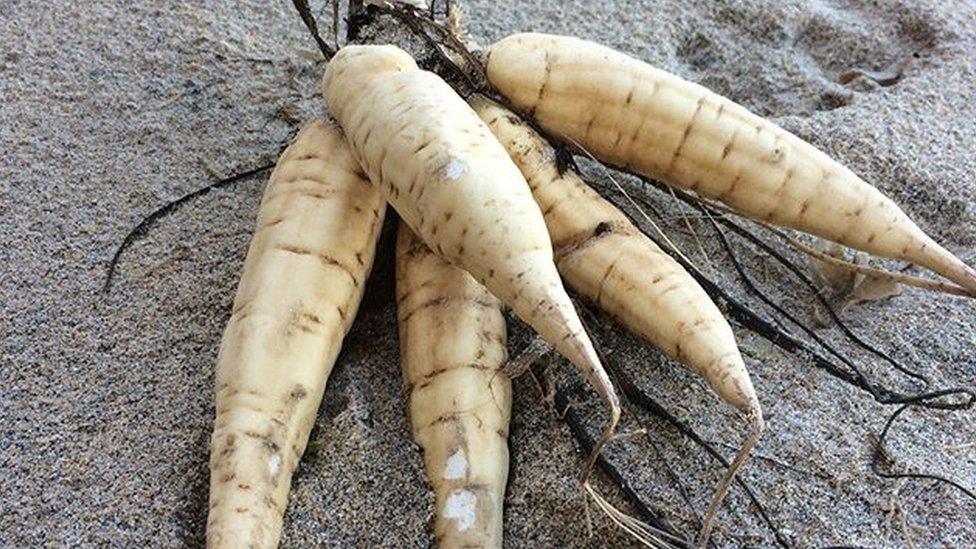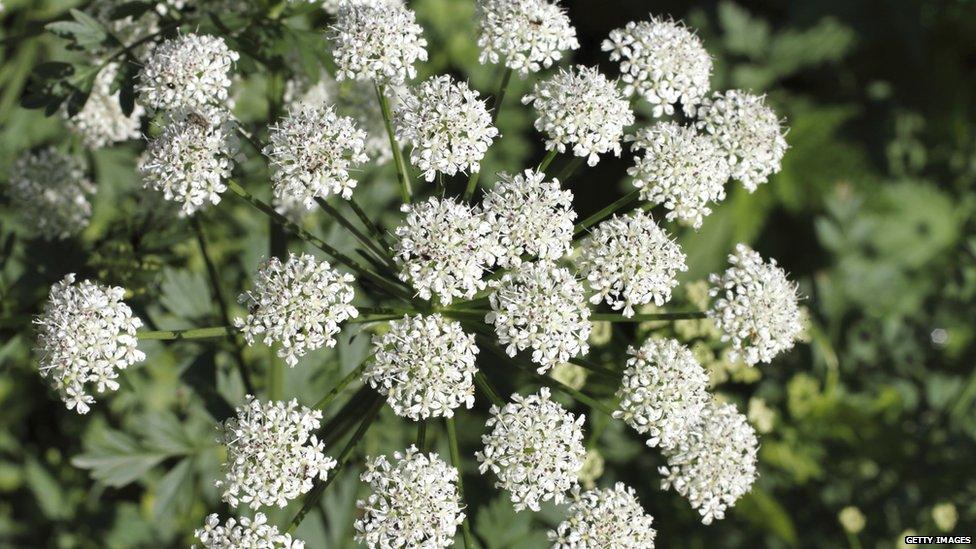Poisonous plant washes up on Millom and St Bees beaches in Cumbria
- Published
- comments

This is a photo of the parsnip-like plants taken in 2018
Poisonous plants that look and smell a bit like parsnips have washed up on beaches in Cumbria.
The public are are being urged to stay away from beaches at Millom and St Bees after roots of hemlock water dropwort have appeared on the shore.
The plants contain a highly toxic poison that, if eaten, could make you very sick and can even be fatal.
Millom coastguard, which covers the West Cumbrian coastline and the southern Lake District, said in a post on social media that it was "highly likely" the recent stormy weather is to blame for the large numbers showing up on Cumbrian shorelines.
What should you do if you spot a hemlock water dropwort?

The plants have white flowers
Millom coastguard said, to anyone heading to the area, "stay vigilant, avoid this plant and take extra care when visiting the beach."
A coastguard spokesperson also told CBBC Newsround that if you come into contact with the plant, you should "seek medical advice immediately".
That means telling an adult and going to your nearest hospital or dialling 999.
"Even a small portion can prove fatal to humans by attacking the nervous system," the coastguard said on their Facebook page. "It is also fatal to animals."
The hemlock water dropwort is one of the most poisonous plants native to Britain
They're usually found by rivers and in marshes
They're members of the carrot family
It's not the first time this has happened - some showed up in St Bees earlier this year.
In 2018, the plant was spotted on Cornish beaches near St Ives, in the aftermath of Storm Emma.
- Published2 November 2021

- Published2 November 2021

- Published2 November 2021

